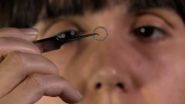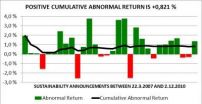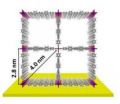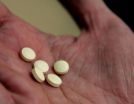(Press-News.org) In research published in the journal Acta Biomaterialia, researchers from the University of Sheffield describe a new method for producing membranes to help in the grafting of stem cells onto the eye, mimicking structural features of the eye itself. The technology has been designed to treat damage to the cornea, the transparent layer on the front of the eye, which is one of the major causes of blindness in the world.
Using a combination of techniques known as microstereolithography and electrospinning, the researchers are able to make a disc of biodegradable material which can be fixed over the cornea. The disc is loaded with stem cells which then multiply, allowing the body to heal the eye naturally.
"The disc has an outer ring containing pockets into which stem cells taken from the patient's healthy eye can be placed," explains EPSRC Fellow, Dr Ílida Ortega Asencio, from Sheffield's Faculty of Engineering. "The material across the centre of the disc is thinner than the ring, so it will biodegrade more quickly allowing the stem cells to proliferate across the surface of the eye to repair the cornea."
A key feature of the disc is that it contains niches or pockets to house and protect the stem cells, mirroring niches found around the rim of a healthy cornea. Standard treatments for corneal blindness are corneal transplants or grafting stem cells onto the eye using donor human amniotic membrane as a temporary carrier to deliver these cells to the eye. For some patients, the treatment can fail after a few years as the repaired eyes do not retain these stem cells, which are required to carry out on-going repair of the cornea. Without this constant repair, thick white scar tissue forms across the cornea causing partial or complete sight loss. The researchers have designed the small pockets they have built into the membrane to help cells to group together and act as a useful reservoir of daughter cells so that a healthy population of stem cells can be retained in the eye.
"Laboratory tests have shown that the membranes will support cell growth, so the next stage is to trial this in patients in India, working with our colleagues in the LV Prasad Eye Institute in Hyderabad," says Professor Sheila MacNeil. "One advantage of our design is that we have made the disc from materials already in use as biodegradable sutures in the eye so we know they won't cause a problem in the body. This means that, subject to the necessary safety studies and approval from Indian Regulatory Authorities, we should be able to move to early stage clinical trials fairly quickly."
Treating corneal blindness is a particularly pressing problem in the developing world, where there are high instances of chemical or accidental damage to the eye but complex treatments such as transplants or amniotic membrane grafts are not available to a large part of the population.
The technique has relevance in more developed countries such as the UK and US as well, according to Dr Frederick Claeyssens. "The current treatments for corneal blindness use donor tissue to deliver the cultured cells which means that you need a tissue bank. But not everyone has access to banked tissues and it is impossible to completely eliminate all risks of disease transmission with living human tissue," he says. "By using a synthetic material, it will eliminate some of the risk to patients and be readily available for all surgeons. We also believe that the overall treatment using these discs will not only be better than current treatments, it will be cheaper as well."
INFORMATION:
The research is supported by a Wellcome Trust Affordable Healthcare for India Award to the University of Sheffield and the LV Prasad Eye Institute, where the work is led by Associate Director and Head of Clinical Research, Dr Virender Sangwan. The work has also been supported through a Research Fellowship for Dr Ortega from the Engineering and Physical Sciences Research Council (EPSRC).
New technique to deliver stem cell therapy may help damaged eyes regain their sight
2012-12-05
ELSE PRESS RELEASES FROM THIS DATE:
An inadequate diet during pregnancy predisposes the baby to diabetes
2012-12-05
Experts already know that pregnant women should not eat for two. A study now insists on the importance of a healthy diet as a way of avoiding increased insulin and glucose levels in the child, both of which are indicators of diabetes and metabolic syndrome risk.
Maternal diet quality during pregnancy is fundamental to foetal growth as well as insulin and glucose levels at birth. Such indications warn of the possible predisposition to suffer from illnesses like diabetes and metabolic syndrome.
The study was headed by the Complutense University of Madrid and published ...
See-through 'MitoFish' opens a new window on brain diseases
2012-12-05
Scientists have demonstrated a new way to investigate mechanisms at work in Alzheimer's and other neurodegenerative diseases, which also could prove useful in the search for effective drugs. For new insights, they turned to the zebrafish, which is transparent in the early stages of its life. The researchers developed a transgenic variety, the "MitoFish," that enables them to see – within individual neurons of living animals – how brain diseases disturb the transport of mitochondria, the power plants of the cell.
Neurodegenerative diseases such as Alzheimer's, Parkinson's, ...
Sustainable business innovation adds firms' market value
2012-12-05
Sustainable business innovation is good business; researchers from Aalto University, Finland have proved. The researchers tested how sustainability business innovations and the market value of companies in the construction sector are connected. The study is a first of its kind. An event study model was used to analyse large construction sector companies in several European countries as well as Australia.
The most important finding of the study is that a positive and statistically significant association exists between sustainability innovation announcements and the market ...
Creativity and linguistic skills important for immersion in World of Warcraft
2012-12-05
The sense of immersion in role-play and computer games is sometimes viewed as dangerous, as players' strong perceptions of fictional worlds are assumed to make them lose contact with reality. On the other hand, players' immersion also implies a potential for improved learning, since it enables them to 'experience' new places and historical eras. Yet a new study from the University of Gothenburg, Sweden, shows that immersion in online role-play games requires a lot of hard work.
Gaming researcher Jonas Linderoth, at the Department of Education, Communication and Learning, ...
Adult antiviral drug effective in suppressing hepatitis B in teens
2012-12-05
A recent clinical trial found that the adult antiviral drug, tenofovir disoproxil fumarate (tenofovir DF), is safe and effective in treating adolescents with hepatitis B virus (HBV). Trial results published in the December issue of Hepatology, a journal of the American Association for the Study of Liver Diseases (AASLD), show that tenofovir DF suppressed HBV in 89% of pediatric participants.
Chronic HBV is a major health burden that studies estimate affects 350 million people worldwide, with 600,000 deaths attributed to this chronic disease. The Centers for Disease Control ...
In US first, Johns Hopkins surgeons implant brain 'pacemaker' for Alzheimer's disease
2012-12-05
Researchers at Johns Hopkins Medicine in November surgically implanted a pacemaker-like device into the brain of a patient in the early stages of Alzheimer's disease, the first such operation in the United States. The device, which provides deep brain stimulation and has been used in thousands of people with Parkinson's disease, is seen as a possible means of boosting memory and reversing cognitive decline.
The surgery is part of a federally funded, multicenter clinical trial marking a new direction in clinical research designed to slow or halt the ravages of the disease, ...
Reading history through genetics
2012-12-05
New York, NY—December 5, 2012—Computer scientists at Columbia's School of Engineering and Applied Science have published a study in the November 2012 issue of The American Journal of Human Genetics (AJHG) that demonstrates a new approach used to analyze genetic data to learn more about the history of populations. The authors are the first to develop a method that can describe in detail events in recent history, over the past 2,000 years. They demonstrate this method in two populations, the Ashkenazi Jews and the Masai people of Kenya, who represent two kinds of histories ...
Large pores
2012-12-05
This press release is available in German.
Researchers of the KIT Institute of Functional Interfaces (IFG), Jacobs University Bremen, and other institutions have developed a new method to produce metal-organic frameworks (MOFs). By means of the so-called liquid-phase epitaxy, the scientists succeeded in producing a new class of MOFs with a pore size never reached before. These frameworks open up interesting applications in medicine, optics, and photonics. The new class of MOFs, called "SURMOF 2", is presented in the "Nature Scientific Reports" journal.
Metal-organic ...
Pokemon provides rare opening for IU study of face-recognition processes
2012-12-05
BLOOMINGTON, Ind. -- At a Bloomington, Ind., toy store, kids ages 8 to 12 gather weekly to trade Pokemon cards and share their mutual absorption in the intrigue and adventure of Pokemon.
This may seem an unlikely source of material to test theories in cognitive neuroscience. But that is where Indiana University brain scientists Karin Harman James and Tom James were when an idea took hold.
"We were down at the club with our son, watching the way the kids talked about the cards, and noticed it was bigger than just a trading game," Tom James said.
Pokemon has since ...
'Resistance' to low-dose aspirin therapy extremely rare
2012-12-05
PHILADELPHIA — Roughly one-fifth of Americans take low-dose aspirin every day for heart-healthy benefits. But, based on either urine or blood tests of how aspirin blocks the stickiness of platelets – blood cells that clump together in the first stages of forming harmful clots – up to one third of patients are deemed unlikely to benefit from daily use. Such patients are called "aspirin resistant." Clots are the main cause of most heart attacks and strokes.
In people who have suffered a heart attack, low-dose aspirin reduces the chances of a second event by about one fifth, ...





